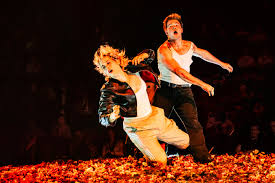
I scanned the critical reviews before committing to the revival of Romeo + Juliet on Broadway. I have never seen the play nor any movie adaptation of Shakespeare’s famous – and somewhat infamous – tragedy. Reviews were all over the board with very mixed opinions. That’s interesting, I think, so let’s check it out. I’m very, very glad I did.
Sam Gold’s interpretation is squarely aimed at the Gen Z crowd. Its stars are well known to many but are definitely adored (worshipped?) by a younger set than me. Kit Connor plays Romeo, best known for a television hit “Heartstopper”. Rachel Zegler was María in the recent West Side Story movie. She is Juliet here. Both have great moments in this production. The audience wants them to be in puppy love and they deliver.
Every member of this young cast is making their Broadway debut. The energy is exciting as is the staging in the round at Circle in the Square. The original play is significantly cut and language is largely contemporary with enough “thou” references thrown in to let us remember from hence the story begat. None of that modernization is off-putting. Instead it feels rather fresh and accessible.
Like The Outsiders playing nearby, these teens are hormonally wired. Boys will be boys and sides will be taken. The recklessness of youth is on full display both comedically as well as dramatically. Shit happens in Verona. While this staging contains a nightclub vibe, complete with a DJ and original songs, blood will be shed.
Many lament the relative ickiness of romancing a thirteen year old girl in this play. Both leads are in their twenties; young and not completely naive. I saw two people drawn to each other despite familial warfare. The two most famous scenes – the balcony and the death scene – are worth the wait.
The balcony scene in particular is a masterfully executed visual. Supremely gorgeous Juliet’s bed rises into the air (inspired scenery by design collective dots). A confident, masculine Romeo looks up from down below. “Where for art thou” becomes “how can I reach up to you?” The imagery and timing of this scene is slow burn sexy. Both actors, notably Mr. Connor with impressive physicality, make the most of this well known highpoint.
That seems to be one of the purposes of this revival. Introducing theatrical Shakespeare to a younger generation (and, while at it, theater in general and plays rather than musicals specifically). The stars are famous, the language is understandable, side plots are excised and a core storyline is presented. There are a lot of cuts and added hip wordplay. All of that felt natural given the context of this show.
Every actor in this play is making their Broadway debut. The cast is not nearly at the level seen in The Outsiders but they are all interesting, many of whom play multiple roles. There’s a handy who’s who graphic in the Playbill to keep them straight. That partially works but does not really matter. They are clearly reveling in their performances with special kudos to Sola Fadiran who memorably inhabits both Capulet and Lady Capulet.
Should a play about romancing a thirteen year old really be celebrated? One of our most famous rock n’ rollers, Jerry Lee Lewis, married a girl that age in the 1950’s (after his early evangelical training, no less). This past week’s nominee for Attorney General of the United States is publicly accused of cavorting with underaged women. As Shakespeare said, “The play’s the thing”. This material, while offensive, is hardly unbelievable or horrendously dated.
Despite raising the average audience age at a recent matinee, I found Romeo + Juliet a transporting experience. I was not brought to tears which some critics bemoaned. Alternatively I was drawn to the distressing realization that the human condition remains deeply flawed and the most innocent among us – our children – cannot grasp the pot of gold at the other end of the rainbow. That outlook sadly arrives much later in life. I’ll remember this unique production for a long time.
Romeo + Juliet is running on Broadway through February 16, 2025.

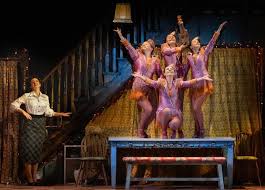

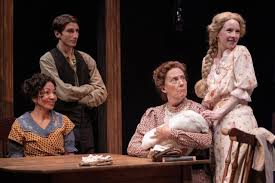
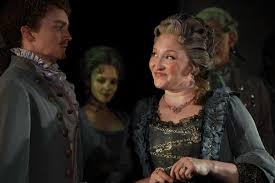
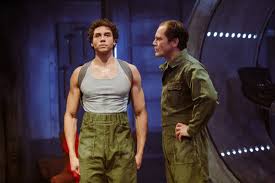
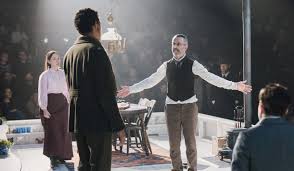



You must be logged in to post a comment.